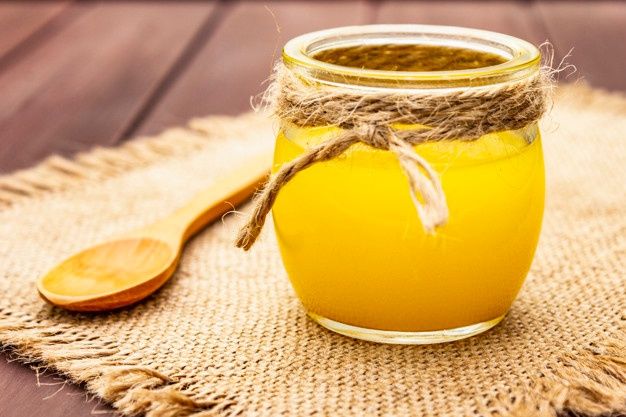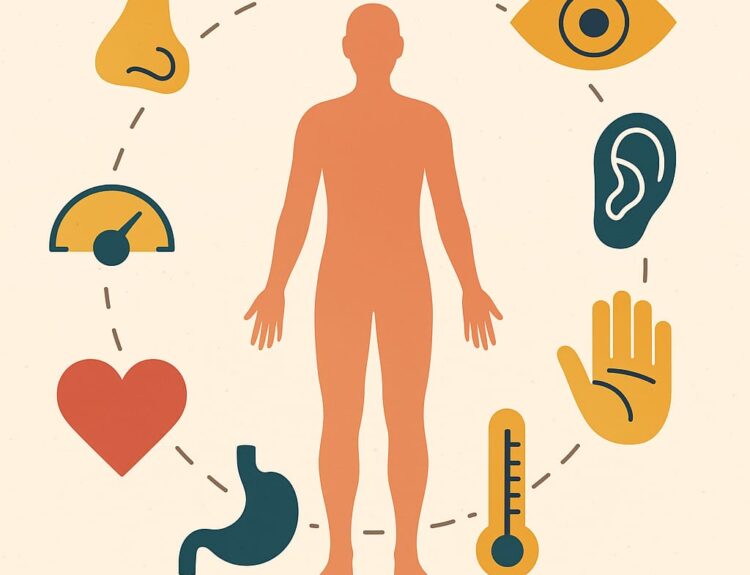
Image source : Pinterest
Growing up, I remember my grandmother preparing fresh ghee at home, its golden aroma filling the kitchen, poured generously over chapatis, dal, and rice. “Ghee is pure,” she would say, sometimes even applying a spoonful to wounds or dry lips. Like many Indian households, ours treasured this golden fat as a symbol of nourishment, purity, and tradition. But as I grew into a scientist, I began to ask: Is ghee truly a superfood, or is it just another food myth passed down with affection but little evidence?
The Myth: “Desi ghee is always healthy and essential for everyone.”
This claim is deeply rooted in culture. Ayurveda describes ghee as “Amrit” (nectar), promoting digestion, memory, and strength. Many Indian diets regard ghee as better than oil, believed to balance doshas and improve overall well-being. But should we take this ancient wisdom at face value, or does modern science paint a more nuanced picture?
What Is Ghee, Really?
Ghee is a type of clarified butter made by heating unsalted butter to separate milk solids and water, leaving behind pure butterfat. Unlike butter, it’s shelf-stable and has a high smoke point (~250°C), which makes it suitable for high-temperature cooking.
Nutritionally, 62% of ghee’s fat content is saturated fat, which is more than coconut oil or lard. A tablespoon of ghee (about 13g) has 120 calories and 9g of saturated fat.
Scientific Evidence: Pros and Cons
🔹 Pros (When Used in Moderation):
- Rich in butyrate: Butyric acid is a short-chain fatty acid that supports gut health and has anti-inflammatory properties.
- High in fat-soluble vitamins: Ghee contains vitamins A, D, E, and K, important for immunity, vision, and bone health.
- Lactose-free: Most milk sugars and proteins are removed during clarification, making ghee tolerable for some lactose-intolerant individuals.
🔻 Cons (When Overused):
- High in saturated fats: Excessive consumption increases LDL (bad) cholesterol, raising the risk of heart disease.
- Calorie-dense: At 9 calories per gram, overuse contributes to obesity and related metabolic disorders.
- Not ideal for everyone: People with cardiovascular conditions or high cholesterol should limit ghee consumption, even if it’s homemade.
1. Myth: Ghee detoxifies the body
Fact: While Ayurveda traditionally uses ghee in detoxification practices, modern scientific evidence does not support the claim that ghee actively detoxifies the body. The human body relies on organs like the liver and kidneys for detoxification (Healthline’s article on Ayurvedic detox highlights the lack of scientific evidence supporting such detox practices).
2. Myth: Ghee helps with weight loss
Fact: Ghee is calorie-dense, providing approximately 9 kcal per gram. While it contains small amounts of medium-chain triglycerides (MCTs) and conjugated linoleic acid (CLA), which have been associated with weight management, the quantities in ghee are minimal. Therefore, excessive consumption can lead to weight gain. (The Cleveland Clinic notes that ghee contains trace amounts of MCTs and CLA, insufficient for significant weight loss effects).
3. Myth: Ghee never goes bad
Fact: Ghee has a longer shelf life than butter due to the removal of milk solids, but it can still become rancid over time, especially if not stored properly. Exposure to light, heat, and moisture can accelerate spoilage. A study on the oxidative stability of ghee discusses how improper storage can lead to rancidity.
4. Myth: Ghee is better than olive oil
Fact: Ghee and olive oil have different nutritional profiles. Ghee is rich in saturated fats, while olive oil contains more monounsaturated fats, which are beneficial for heart health. The choice between them should depend on cooking methods and individual health considerations. A study comparing diets rich in ghee or olive oil found that ghee increased certain cholesterol markers compared to olive oil.
5. Myth: Homemade ghee is always pure
Fact: Homemade ghee can be pure if prepared correctly, but there’s a risk of contamination or adulteration if not handled properly. Additionally, some commercial ghee products have been found to contain adulterants. A study assessing ghee adulteration in Bangladesh found instances of impurities in ghee samples.
How Much Is Too Much?
The American Heart Association recommends limiting saturated fat intake to no more than 5-6% of total daily calories 9. That means:
- For a 2,000-calorie diet: ~13g of saturated fat max per day.
- One tablespoon of ghee already provides ~9g.
So, even one generous spoonful covers over 70% of your daily limit.
Ghee vs. Other Oils
| Fat Type | Ghee | Olive Oil | Sunflower Oil | Coconut Oil |
| Saturated Fat | High (~62%) | Low (~15%) | Low | High (~82%) |
| Smoke Point | Very High (~250°C) | Medium (~190°C) | High (~232°C) | Medium (~177°C) |
| Heart Health | Caution in excess | Good | Neutral | Risk in excess |
The Cultural Balance
Desi ghee is more than a food, it’s part of identity, memory, and rituals. It isn’t “bad” or “unhealthy” by default. But blind trust in tradition without evidence can lead to health risks.
Like many things, the dose makes the poison. Ghee in small quantities can be part of a balanced diet, especially when replacing trans fats or hydrogenated oils.
Final Takeaway
- Ghee is nutrient-rich, but also fat-rich.
- Moderation is essential, 1 to 2 teaspoons/day is a safe range for healthy adults.
- It’s not a cure-all, nor a villain. Context, quantity, and lifestyle matter more than labels.
Let’s preserve our food heritage, but not at the cost of science. Let ghee be golden, not glorified.
Written by : Dr. Reshma Patil

